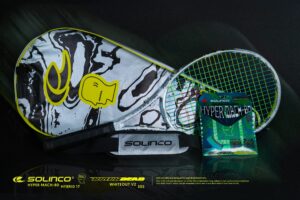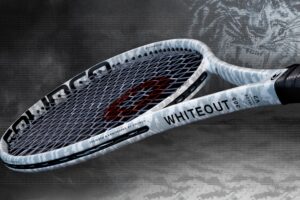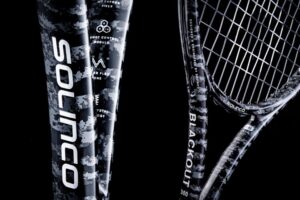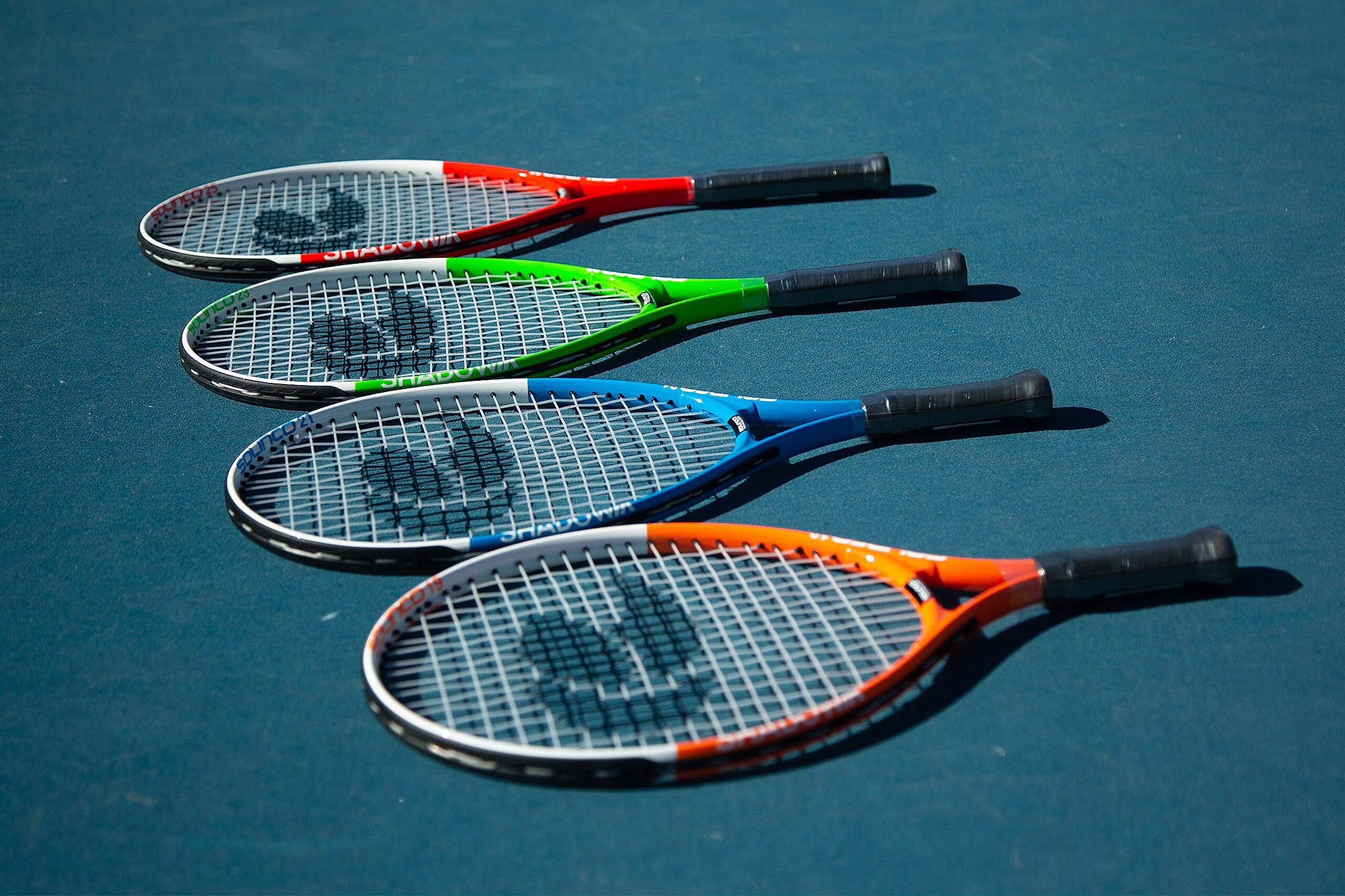
The Ultimate Guide to Junior Tennis Equipment from Expert Coaches
Contributors: Coach Derek Porter and Coach Greg Lumpkin
—
Your child just discovered tennis and is LOVING it. Not only can they spend hours on the court, they are showing real commitment to improve with every session. Now that the hard part of getting your child motivated is out of the way, you can move onto choosing the right equipment for them master techniques and develop their game.
Team Solinco coaches, Derek Porter and Greg Lumpkin, are here to guide you through the essential aspects of tennis equipment. Both coaches have expert experience working with top junior athletes from their early years to their professional tour beginnings.
Discover their step by step guide for selecting the right tennis equipment for junior athletes.
1. Assess the Player
Before selecting a racquet, take time to assess the player. Consider factors such as their age, skill level, and strength. This will help you determine the equipment setup that suits them and sets them up for long-term success.
Derek Porter: I focus on three main areas: the player’s skill level, strength, and technique. With this information, I can match them with the right racquet weight, string type, and string tension.
Greg Lumpkin: There are so many factors that can be considered when choosing equipment. For someone new to the game, I think it’s best to simplify the process and find a racket that is comfortable for them in size and weight.
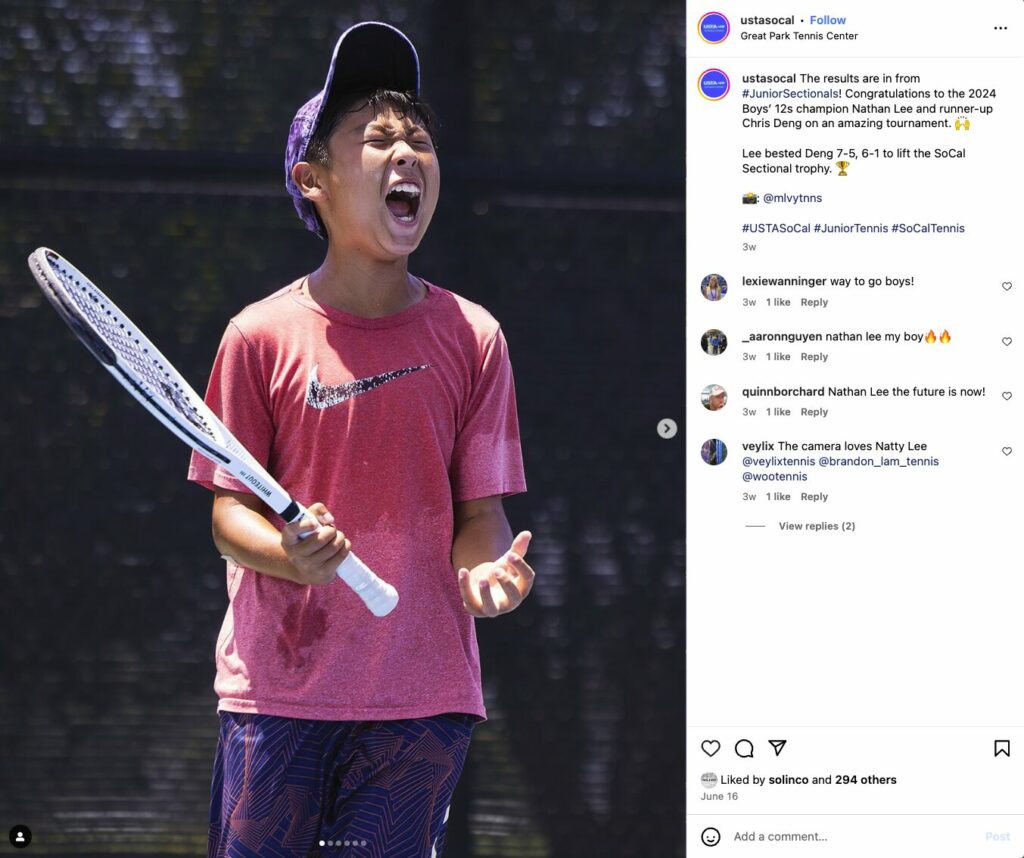
2. Choose a Racquet Based on Length, Weight, and Grip Size
Greg Lumpkin: The length, weight, and grip size of the racquet are probably the most important factors early on. Playing with the wrong racquet size can seriously interfere with the player’s technical development.
Derek Porter: The grip size is very overlooked. It’s imperative that younger players stay away from unwanted extreme grips.
Racquet length: Measured in inches, racquet length refers to how long the racquet is from the end of the handle to the top of the hoop.
Racquet weight: Measured in grams, this refers to how heavy the racquet is.
Grip size: Refers to the circumference of the handle in inches. To determine grip size, measure the length from the tip of the ring finger to the middle of the palm of the hand in milimeters. Solinco’s junior racquets come in a 3 ⅝ grip size, which support hand measurements 90-92 mm long.
Solinco’s junior racquets are aluminum built, prestrung, and cater to children aged 4 to 9 years old. They’re available in four lengths and weights.
Takeaways: Choose a racquet that is light weight and matches the grip size of the player. Learn basic racquet terminology such as weight, length, and grip size, to know what to look out for when choosing a junior racquet.


Jr Shadow 19 – Length 19 in ; Headsize 88 sq. inch ; Weight 190 g


Jr Shadow 21 – Length 21 in ; Headsize 93 sq. inch ; Weight 200 g


Jr Shadow 23 – Length 23 in ; Headsize 98 sq. inch ; Weight 210 g


Jr Shadow 23 – Length 25 in ; Headsize 102 sq. inch ; Weight 230 g
3. Choose strings that work best for kids 12 and under
Greg Lumpkin: Typically a multifilament or a softer string is best for young players.
Derek Lumpkin: I usually have the players string with a high gauge multifilament at a low tension. This helps them control the ball. As their technique develops, they are able to handle a polyester string. If that’s the case, I’ll set them up with the softest poly possible at a low tension.
*Solinco’s junior racquets come prestrung with a multifilament string.
Takeaway: Look for softer strings like multifilaments that are gentle on the arm and facilitate easy racquet swing.
4. Choose strings that work best for kids 13 and up
As your child’s technique advances and they handle heavier racquets with ease, it’s worth exploring strings that enhance their power and spin potential. Once their technique is refined, coaches Derek and Greg suggest transitioning to a firmer polyester string for optimal performance.
Greg Lumpkin: A competitive player should take advantage of the benefits of polyester either with a full bed or a hybrid.
Derek Porter: I prefer they use a full bed of poly. I do find that if I’m in an environment that has a winter I will actually change the string to a slightly softer poly in the winter months and/or loosen up a few pounds.
5. What are the signs that indicate a junior player might be using the wrong equipment?
In the early stages of their tennis journey, players should focus on mastering shots and fundamental skills like ball feel and adding spin. Poor technique or early injuries could indicate equipment issues. Consult a coach or experienced equipment expert to determine if equipment adjustments are needed.
Derek Porter: Extreme grips and poor technique are the biggest indicators that a player may be using the wrong equipment. More subtle signs include a player’s inability to create revolutions on the ball, their ability to curve, slide, drive or make the ball jump as needed.
Derek Porter: Extreme grips and poor technique are the biggest indicators that a player may be using the wrong equipment. More subtle signs include a player’s inability to create revolutions on the ball, their ability to curve, slide, drive or make the ball jump as needed.
6. Is there other junior-specific equipment designed for training and development?
As your child learns the basics, consider other useful equipment such as low-compression tennis balls. These balls offer a larger margin of error with lower bounces, for more consistent rallies and better ball action.
Greg Lumpkin: Low compression balls are a great tool to help young kids develop an understanding of the game and speed up technical progression. They can also be a great tool for players of all ages while working on technique or lowering impact to help manage an injury.
The Bottom Line
As with any new venture, starting on the right foot is essential. The same goes for the start of your tennis journey!
Derek Porter and Greg Lumpkin have worked with countless young players, helping them develop their skills, grow into top junior and pro players, and find the best equipment to enhance their game.
Start by assessing the player’s age, skill level, and strength to select the appropriate equipment. Then you can choose the right racquet type and strings. Finally, consider other essential training equipment for young players to support their long-term development.
About the Contributors
Greg Lumpkin
Greg Lumpkin is a high-performance tennis coach at the elite Robbie Wagner Tennis Academy. A native Long Islander, Greg attended Hofstra University where he earned a spot on the varsity tennis team as a walk-on. He also spent time working under a world-renowned physical therapist from whom he learned about injury prevention, treatment and management, as well as kinesiology and biomechanics. He is an expert in slow motion video analysis and has used it successfully in the development of top juniors throughout his coaching career. He currently coaches ITF No. 27, Jack Kennedy from Long Island, NY.
Derek Porter
Derek Porter is the Head Tennis Pro & Director of College Placement at the esteemed Van der Meer Academy. A graduate of the University of North Carolina, Chapel Hill, Derek is an experienced coach at all levels. He captained the UNC men’s tennis team and graduated with a BA degree in Communication Studies with a minor in Marketing. In 2006, Derek won the UNC Men’s Tennis Sportsmanship Award. Derek is a USPTA Elite Certified Professional and is a great team player in all senses of the word.
SHARE
Explore Solinco
Back by Demand: More from the Solinco x Brain Dead Collection
Back by popular demand, the Solinco x Brain Dead Acid Chrome tennis collection returns. The lineup includes the limited edition Whiteout V2, the Hyper-Mach BD hybrid string set, and a brand-new single racquet bag in the signature AcidChrome style. Built for performance
Read MoreDiscover the New Whiteout V2 18×20 & 18×20 XTD: Precision, Spin, and Power in One Racquet
Introducing the new Solinco Whiteout V2 18×20 and 18×20 XTD— Perfect for aggressive players seeking a lower launch angle and all-court versatility.
Read MoreSolinco Blackout 300 V2 Review Roundup: Power, Comfort, and Control Perfected
Discover why players and reviewers are raving about the Solinco Blackout 300 V2. Combining explosive power, comfort, and stability, this modern performance racquet stands out as a true all-court weapon.
Read More


























